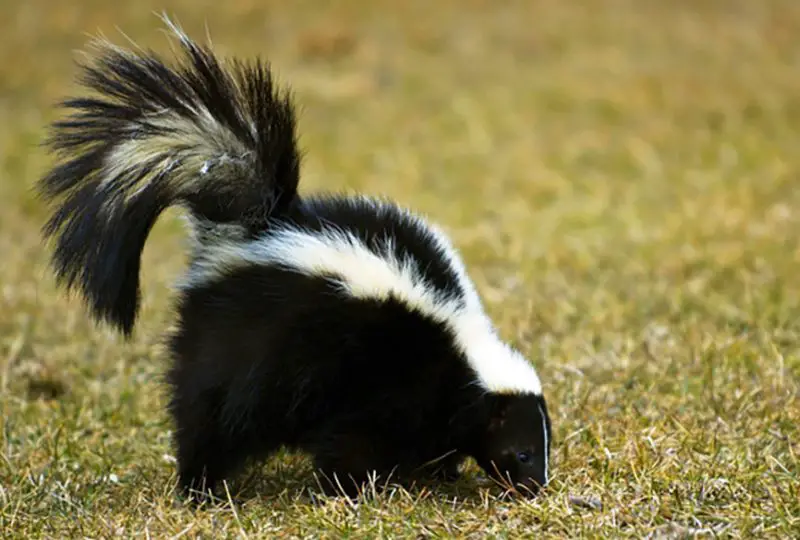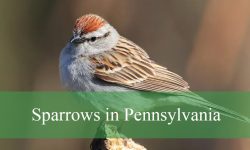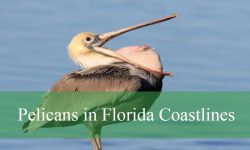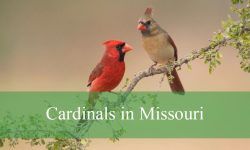Most Texans recognize skunks by their smell long before they ever see one, but few people truly understand these animals. The skunks in Texas are far more intelligent, beneficial, and biologically fascinating than their reputation suggests. They shape ecosystems, protect landscapes from pest outbreaks, influence soil health, and interact with Texas environments in ways most residents never realize. Far from being simple “spray machines,” skunks are among the most misunderstood mammals in the state.
This is the complete, science-based guide that reveals the surprising truths about Texas skunks — the facts people rarely talk about, the behaviors that go unnoticed, and the ecological roles that quietly support life across rural, suburban, and even urban areas of the Lone Star State.
Skunks in Texas: Four Species You Probably Didn’t Know Lived Here

Most people can name only the striped skunk, but Texas is one of the few states with four distinct skunk species — each adapted to different habitats and different lifestyles.
-
Striped skunk – the common black-and-white species familiar across Texas
-
Eastern spotted skunk – small, agile, pattern-patched, capable of handstands
-
Western spotted skunk – similar to the eastern species but limited to West Texas
-
American hog-nosed skunk – large, desert-adapted, powerful digger with a long snout
Each species occupies its own ecological niche. The striped skunk thrives around people, the spotted skunks prefer rocky or forested cover, and the hog-nosed skunk dominates arid regions where digging skills matter more than anything else. What they all share is an unusual mix of intelligence, sensory ability, and adaptability that makes them one of Texas’s quiet survivors.
Skunks Aren’t “Smelly Animals” — They Are Highly Specialized Mammals
Most Texans know that a skunk can spray. Few understand how advanced that defensive system is. The spray is produced in specialized glands containing sulfur-based thiols and thioacetates — chemicals so potent that they bind to skin, fur, and air molecules for days.
But here’s what’s surprising: skunks almost never use their spray unless absolutely necessary.
Before resorting to musk, a skunk performs a well-defined sequence of warnings:
-
A raised, fanned tail
-
Sharp foot-stomping
-
Hissing or clicking
-
Backward shuffling
-
For spotted skunks, a dramatic handstand
These behaviors are not aggression — they are restraint. Producing spray uses valuable metabolic resources. A skunk that sprays too often becomes vulnerable. In evolutionary terms, skunks survived not by “being smelly,” but by avoiding unnecessary conflict.
That’s a level of behavioral strategy most Texans don’t associate with them.
Why Texas Is the Perfect State for Skunks to Thrive
Texas is unique: forests, deserts, coastlines, prairies, marshes, hills, and dense suburbs all exist within one state. This makes Texas a paradise for skunks.
They thrive in:
-
East Texas pine forests
-
Hill Country oak savannas
-
South Texas shrublands
-
Gulf Coast wetlands
-
Panhandle grasslands
-
West Texas deserts
-
Urban and suburban communities
Each habitat offers different resources — insects, fruit, small rodents, shelter, or loose soil for digging. Texas’s warm climate also reduces energy requirements, which is one reason skunks here are active nearly year-round.
Their Diet Is One of the Most Misunderstood Things About Skunks
Despite their “pest” reputation, skunks eat far more pests than they cause. Most Texans don’t realize that skunks are among the most important natural pest-control animals in the state.
A typical skunk’s natural diet includes:
-
Beetles
-
Grubs
-
Cutworms
-
Crickets
-
Termites
-
Small rodents
-
Fallen fruit
-
Seeds and vegetation
In residential areas, skunks also clean up dropped birdseed, compost scraps, and pet food left outside.
Scientists estimate that a single skunk removes thousands of insect pests per season. For ranchers, farmers, and gardeners, their value is enormous — yet rarely acknowledged.
The Shallow Holes in Your Lawn? That’s a Sign of a Healthy Yard
Many Texans assume the small, shallow holes in their grass come from armadillos, but the pattern often belongs to a skunk. The holes are usually round, neat, and no deeper than a couple of inches — made while searching for grubs.
These holes are not a sign of damage. They actually indicate:
-
Your lawn has a rich invertebrate population.
-
A skunk is removing harmful larvae and beetles.
-
Soil aeration is improving.
This foraging behavior reduces future lawn damage and boosts soil structure — essentially giving your yard a free ecological tune-up.
Skunks Are Soft-Footed, Silent, and Surprisingly Intelligent
Skunks move with a rolling gait that looks slow and clumsy, but this is intentional. It conserves energy, reduces sound, and increases sensory awareness.
Cognitive research shows that skunks have:
-
Strong spatial memory
-
The ability to learn feeding routes
-
Recognition of safe vs. unsafe yards
-
Problem-solving skills for accessing food
-
The ability to associate human activity with threat or safety
Unlike raccoons, skunks do not manipulate objects or raid houses. But their intelligence is comparable, especially in navigation and risk-avoidance behavior.
Skunks Benefit Texas Ecosystems in More Ways Than Expected
Ecologists classify skunks as:
-
Insect controllers
-
Soil aerators
-
Seed dispersers
-
Natural scavengers
-
Prey species for larger predators
Great horned owls — one of Texas’s most powerful raptors — are immune to skunk spray. This single predator relationship maintains balance in many ecosystems. Remove skunks from Texas, and insect outbreaks would become more severe, decomposition rates would change, and predators would lose a natural food source.
Skunks matter far more than their reputation suggests.
Their Sense of Smell Is Stronger Than a Dog’s
Textbooks rarely mention this, but skunks have an extraordinary olfactory system — in many measures surpassing even dogs. This allows them to detect:
-
Insects beneath several inches of soil
-
Buried grubs
-
Food scraps under leaves
-
Rodent nests
-
Fruits over long distances
This sensory strength is one reason they walk with their nose close to the ground. It also explains their slow pace — scent information requires time to process.
How Skunks Reproduce and Raise Their Young in Texas
Skunk mating season happens in late winter, when males roam widely in search of females. This is why Texans see more skunks hit by cars between February and April — males travel far beyond their home ranges.
Females give birth to litters of two to seven kits inside dens hidden under sheds, brush piles, logs, culverts, or rocky cavities. Kits are born blind and helpless, but within weeks they develop their patterns and follow their mother on safe, guided foraging trips.
Skunk mothers are highly protective but rarely aggressive. They prioritize teaching — where to dig, what to eat, how to avoid threats, how to use warning behaviors correctly. In terms of maternal investment, skunks rank among Texas’s most attentive small mammals.
Skunks in Texas Suburbs: Why They Show Up on Cameras So Often
Home security cameras have caused a surprising discovery: skunks visit more suburban yards than previously thought. Most homeowners never see them because skunks prefer hours between midnight and sunrise.
Why suburbs attract skunks:
-
Water from sprinklers
-
Grassy lawns full of grubs
-
Bird feeders spilling seed
-
Outdoor pet food
-
Easy shelter under decks or sheds
-
Fruit trees with fallen produce
These yards mimic natural habitat conditions while providing abundant food. To a skunk, a quiet Texas neighborhood at night is a nearly perfect foraging environment.
Skunks Rarely Attack Pets — They Defend Themselves From Pets
If a skunk sprays a dog, the skunk was defending itself. Skunks do not chase, hunt, or attack pets. The conflict nearly always happens because the dog runs toward the skunk — often barking, cornering it, or trying to sniff it closely.
From the skunk’s perspective, spray is the only effective way to stop a predator.
From the dog’s perspective, it was just being curious.
Understanding this dynamic helps Texans avoid almost every spray incident simply by supervising pets after dark.
The Biggest Threat to Skunks in Texas Is the Road
Thousands of skunks die on Texas roads each year. Skunks have poor eyesight and cannot judge distance well at night. Their slow gait and reliance on scent make busy roads deadly.
Urban sprawl, new highways, and faster traffic continue to reduce skunk numbers in some counties. For certain species like the spotted skunk, vehicles are a major conservation concern.
Common Myths Texans Believe About Skunks
Here are the most common misunderstandings:
-
“They spray without warning.”
False. They give multiple warnings first. -
“Skunks always smell bad.”
False. Only the spray smells; the animal itself does not. -
“They destroy lawns.”
They actually remove harmful larvae and aerate soil. -
“Skunks are aggressive.”
They avoid confrontation more than almost any mammal. -
“They are overpopulated pests.”
In many areas, especially for spotted skunks, populations are declining.
How Texans Can Avoid Skunk Conflicts Humanely
Most conflicts can be prevented with simple steps:
-
Remove outdoor pet food.
-
Secure trash tightly.
-
Pick up fallen fruit.
-
Fix gaps under patios or sheds.
-
Keep dogs supervised at night.
These actions encourage skunks to forage elsewhere without harming wildlife. Humane coexistence protects both skunks and the people who share their environment.
Final Thoughts
The skunks in Texas are not nuisances — they are crucial members of the state’s ecosystem, misunderstood because few people see their true behaviors. Their intelligence, peaceful nature, and insect-eating habits make them invaluable allies in both rural and suburban environments. Understanding their biology and behavior turns fear into respect, and annoyance into curiosity.
Once Texans learn the truth about skunks, the midnight shape wandering across a yard becomes less of a problem and more of a reminder of how much remains hidden in the natural world around us. These animals are gentle, vital, and scientifically remarkable — and they deserve to be recognized as such.
FAQs About Skunks in Texas
Do skunks hibernate in Texas?
Skunks do not hibernate, but they reduce activity during cold spells. In Texas, where winters are mild, they remain active throughout most of the year, emerging on warmer nights to forage.
Are skunks dangerous to people or pets?
Skunks are not aggressive. They only spray when cornered or threatened, especially by curious dogs. Keeping distance and supervising pets prevents nearly all conflicts.
What do skunks eat in Texas?
Their diet consists mainly of insects such as grubs, beetles, cutworms, caterpillars, and spiders. They also eat fruit, small rodents, lizards, seeds, and carrion when available.
Can skunk spray cause health problems?
The spray is not deadly, but it can irritate eyes, noses, and skin. Pets may temporarily lose their sense of smell after being sprayed due to inflammation.
Are skunks protected in Texas?
Striped skunks are not protected, but spotted skunks—especially the eastern spotted skunk—are under conservation concern due to declining populations.
Can skunks climb?
Striped skunks rarely climb because of their body structure. Spotted skunks, however, are agile climbers that easily scale trees, fences, and rocky slopes.
Why do skunks dig holes in yards?
Skunks dig shallow holes while searching for grubs and beetle larvae. These holes may look messy but actually indicate a healthy ecosystem and help aerate soil.
What should I do if I see a skunk near my house?
Give the skunk space and remove attractants such as pet food, fallen fruit, or exposed garbage. In most cases, the skunk will leave on its own once resources are gone.






